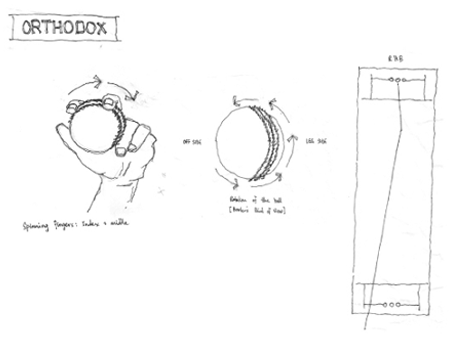| Pradeep Mathew's amazing deliveries | ||
| Webpage dedicated to the varied talents of Pradeep Mathew: Sri Lanka's greatest unsung cricketer. | ||
| The Orthodox | ||
 |
||
Of course, there is nothing legendary about orthodox finger spin. Most slow left-armers adopt it as weapon of choice, the ball that angles in at the batsman’s pads and leaves him. It is quicker than the chinaman and requires an equal but opposite wrist action. The wrist rolls against the movement of the arm. An orthodox bowler rarely bowls chinaman and vice versa. So how did Mathew do both so proficiently? In his third year of club cricket, against the touring Englishmen, Mathew would drop dart-like finger spinners amidst clusters of looping chinamen and googlies. Commentator Bob Willis described him as a “bowler suffering from schizophrenia” even though it was the English top order that suffered most. Graham Atherton succumbed to it four times on that tour. As did Robin Hick and Chris Thorpe. Against the New Zealanders Mathew developed a wrist-spinning version. A ball bowled with a chinaman action, where the wrist is flung at the last minute towards slip. It was perhaps this joint pivot that caused the carpal tunnel syndrome that would later stall Mathew’s career. In the 1988 Asia Cup, 6 of Mathew’s 17 wickets came from this delivery. Towards the end of his career, when not sulking or fighting with management, Mathew would sit with the juniors and share the wisdom of his years. Did he share his wrist-spinning manoeuvre with the shy dark Tamil off-spinner from Kandy who shared his room during the 1994 New Zealand tour? I would place seven lakhs on the answer being yes. |
||
| << Back | ||
| Articles (c)W.G. Karunasena. |